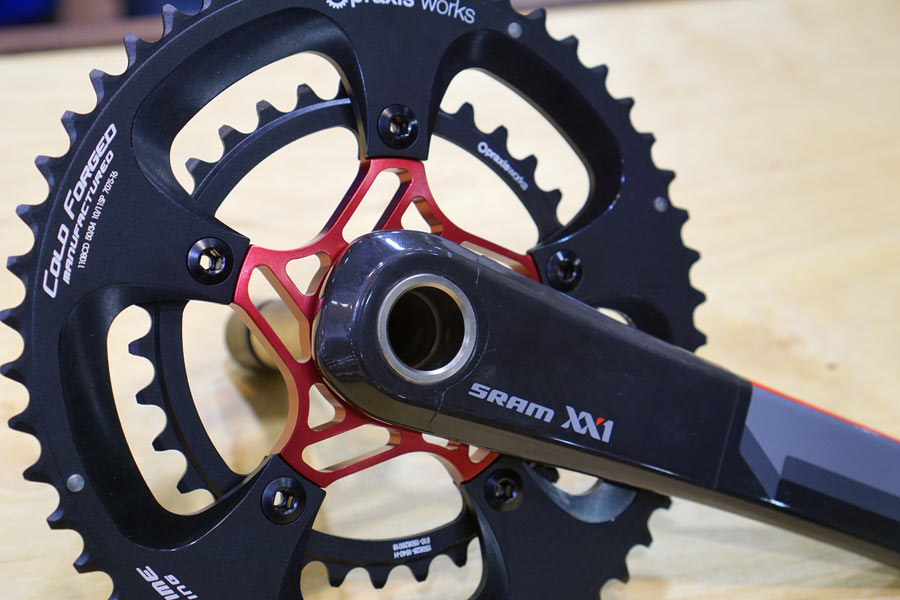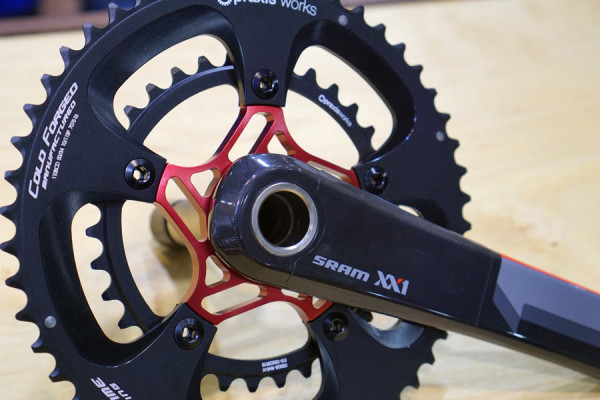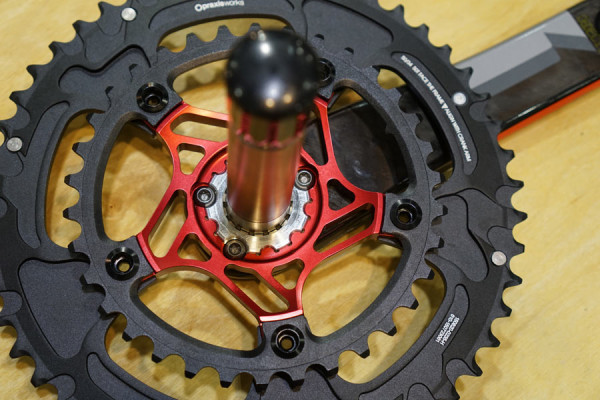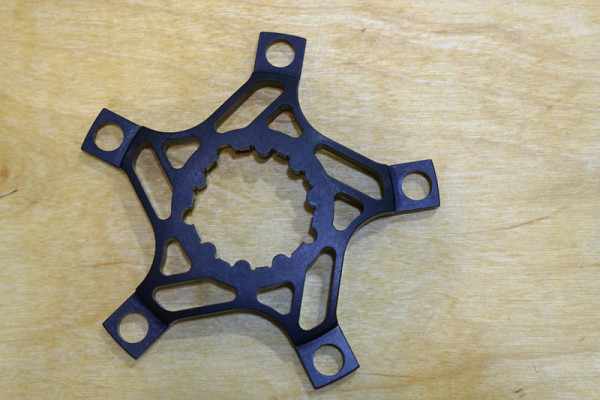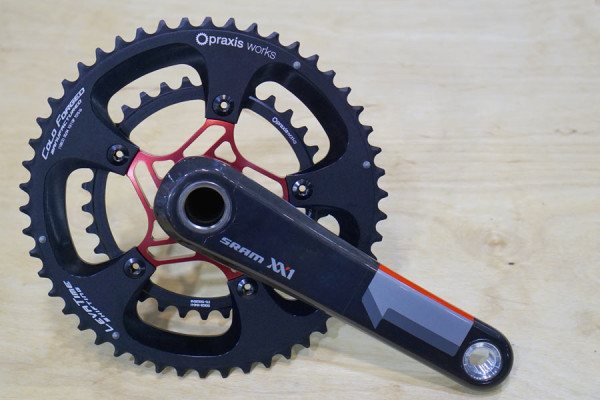At first glance, we just thought this was a fancy aftermarket spider. Then we noticed it was on a mountain bike crankset, which was being shown elsewhere on cyclocross and gravel bikes. Curiosity piqued.
As Kent Eriksen explains it, neither Shimano nor SRAM have updated their road cranksets’ chainline as bikes have started migrating to 135mm rear spacing for disc brakes. So, not only does that affect chainline, but, as cyclocross and gravel tires get bigger, you start running the risk of chain/tire clearance issues.
But, mountain bike cranks were already designed around wider rear axle spacing, but their spiders weren’t set up to handle double chainrings with road-oriented tooth counts. Hmmm…
Designed by in-house builder Brad Bingham, their new aftermarket spider for SRAM direct mount cranks solves this issue by moving the chainline out ~4mm. So, it’s pushing the chain a bit wider than a road crankset, but not quite as wide as a standard MTB crankset. It then let’s you run a road double on a crankset originally designed for singles. And if you’re running electronic shifting (Di2, EPS, eTAP), it also lets you quickly switch between single and double chainring setups since all you really have to do is unplug and remove the front derailleur. Just use a chain with a quick link (don’t worry, we won’t tell anyone you’re reusing that – we do it, too).
Another benefit is you can you run larger chainrings and still clear the chainstay, good for a bike whose chainstays are wider to clear bigger tires.
Kent said it’s only a matter of time until SRAM or Shimano addresses this on their own. Until then, they plan on selling them and recommend them with Praxis chainrings. The upcharge for it on a complete bike will be $400 with rings, but aftermarket price is TBD.
Stay tuned for full coverage of his bikes, two of which won awards this year!
